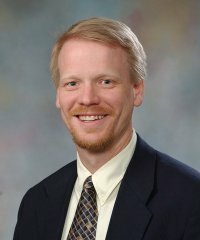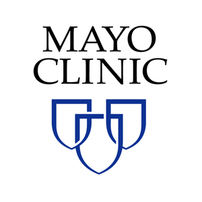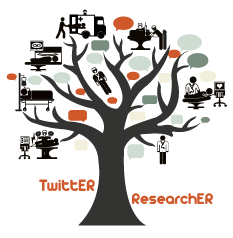Interview with Lee Aase
 Maybe you read the post I recently wrote about a slideshow describing how Mayo Clinic utilizes social media in fantastic ways. This slideshow was created by Lee Aase (), who happens to be manager of Syndication and Social Media for Mayo Clinic (). Mr. Aase, despite his busy schedule, was kind enough to answer some of my questions that might be of interest to you.
Maybe you read the post I recently wrote about a slideshow describing how Mayo Clinic utilizes social media in fantastic ways. This slideshow was created by Lee Aase (), who happens to be manager of Syndication and Social Media for Mayo Clinic (). Mr. Aase, despite his busy schedule, was kind enough to answer some of my questions that might be of interest to you.
I.K. Please tell me a little bit more about your background and how you ended up manager of Syndication and Social Media for Mayo Clinic?

L.A. I started working in media relations for Mayo Clinic in April 2000, focusing on cardiology, but in 2003 became manager of our media relations team. We have produced syndicated news packages for local TV stations since 2000, and for local radio stations since 2004. In 2005 we converted the mp3 files from the radio program into a podcast series, which became quite popular. That paved the way for us to do longer podcasts, a and blogs, and eventually hiring another manager for national media relations, while I focus on our syndicated products and the social media platforms.
I.K. What are your duties and responsibilities? Could you maybe describe your regular work day?
L.A. My main duties are to lead the team the produces our syndicated news content and produces tailored, extended content for social media platforms. Our role is not to “do” all the social media, but to be a catalyst to involve others. We provide training for public affairs staff so they can incorporate social media strategies into all of their communications projects, and so that they in turn can offer guidance to other employees. A major part of my job is “evangelism” for our Mayo Clinic social media platforms, both internally and externally.
I.K. I saw from your slideshow that Mayo Clinic utilizes podcasts, blogs, YouTube, Facebook and Twitter. Would you be so kind to bring closer to us the processes which occur in the background? Just from a practical perspective, how does this function? How many people are working on maintaining all of these services, how independent are they?
L.A. We have a small core team (about 3 people) who facilitate involvement from others in these platforms. For example, someone outside the team who covers the cardiology beat may interview one of our physicians about research coming in a journal, and will do that on a consumer-grade video camera. This will be part of a post on the News Blog, and the video will be used to help journalists better understand the story and to communicate directly with consumers and patients. Our core team does the video editing to ensure quality. In this way, social media isn’t another “silo” but is instead incorporated into all communications, involving our whole department.
I.K. Your latest creation is Sharing Mayo Clinic, a hub to integrate Mayo social media, where your patients, families, friends and employees can share their stories. How do your employees respond to such opportunities? Do you have some numbers, statistics regarding their involvement that you can share with us?
L.A. We have been pleased with the response to Sharing Mayo Clinic, as we have had more than 100 posts and over 600 comments. Traffic built steadily until last month, when one of the featured videos went “viral” and has been viewed more than 2.7 million times on YouTube. This was certainly unexpected but has accelerated growth of the blog, which only launched in late January of this year.
I.K. You are also the Chancellor of Social Media University, which is a post-secondary educational institution dedicated to providing practical, hands-on training in social media to lifelong learners. Sounds really interesting. How did you come up with the idea to start it? How are you happy with the response so far?

L.A. It started as my personal blog, which I used to get practical experience in blogging and social media so I could see how to apply the tools for Mayo. As I began doing presentations about my work, it soon became apparent there was a need — particularly for mid-career professionals — to learn about social media. So I reorganized my blog and re-branded it as SMUG (Social Media University, Global) as a fun, humorous way to learn serious work-related applications for social media tools. By creating a series of curricula covering the major platforms, it lets people work through and learn at their own pace in a logical order, such as Podcasting 101, 102, 103 etc. I’ve been thrilled with the response, with SMUGgles (as we call our student body) from every continent except Antarctica. It’s neat that through social media someone from a small city in Minnesota can interact with people from all over the world.
Ivor Kovic
Latest posts by Ivor Kovic (see all)
- Intraosseous access video lecture - May 22, 2015
- Emergency Physicians on Twitter - March 16, 2015
- Protected: Ddimer audit - March 12, 2015


Thanks for this post, and for the opportunity to interact with you and your readers. I appreciate what you are doing to spread the word about social media applications in health care.
[…] Interview with Lee Aase (Ivor Kovic, MD): Lee Aase controls the online projects of Mayo Clinic. […]